By Alex Trukan
Defending in a flat 4-4-2 formation is one of the most widespread ways to set up a team when out of possession. It is relatively simple to implement, effective and suits a lot of players. When executed correctly, it can be very difficult to break through. This is why, it often poses a lot of problems for the attacking teams to create goal scoring chances. At the same time, defending in a flat 4-4-2 has many disadvantages. Main drawback is lack of players that naturally occupy half spaces what makes it prone to through balls. It may also cause some problems if the attacking team switches play quickly and efficiently. This article will explore ways of attacking to break through a team playing in a flat 4-4-2.
One of the biggest threats that can be caused are through vertical balls breaking the lines. This can be played straight from the centre back into the striker but also on a smaller distances from defensive midfielders of full backs. The idea is to play the ball through the opposition unit. This can be effective as when playing in a flat 4-4-2 there is a limited amount of players that can operate between the lines and potentially intercept through ball.
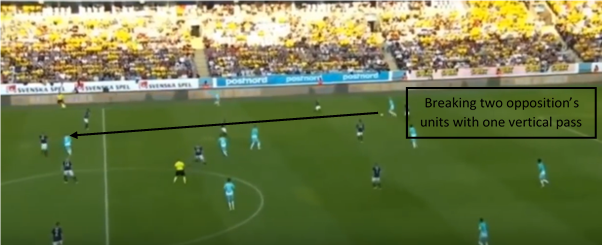
This creates opportunities for the strikers to drop and operate between opposition’s midfield and back units. In case of the opposition’s midfielder drops deeper and marks between lines, it will break their unit and create more space for attacking midfielders to get on the ball.
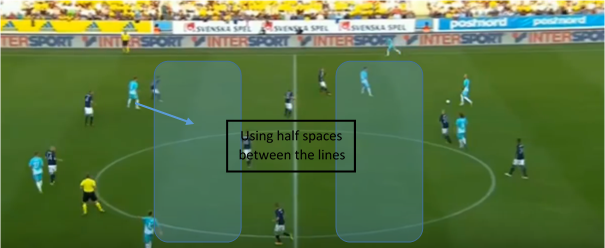
As it can be seen below, gaps between the units can get very big what will make playing through the thirds very easy for the attacking team. Especially having central midfielders making forward runs will help in dragging opposition’s central midfielders out of position and creating space centrally.
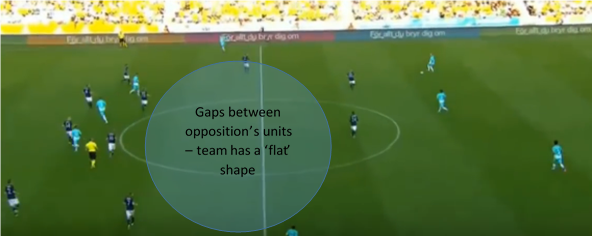
In case opposition stays narrow making it difficult to utilise through balls, clever movement of the strikers and midfielders would be the key. One of the most popular combinations includes striker dropping deeper and one of the midfielders making a movement into striker’s position. This creates an option to play short (into striker) as well as in behind into midfielder making a run.
[wpsharely id="2988"][/wpsharely]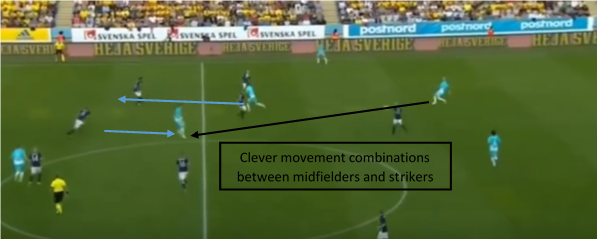
Another, more direct option would be a pass into a striker/wide midfielder making a run into space between opposition’s centre back and full back. Opposition having only two central midfielders would make it difficult to cover the marker who will track the runner, potentially opening up gaps in the back line.
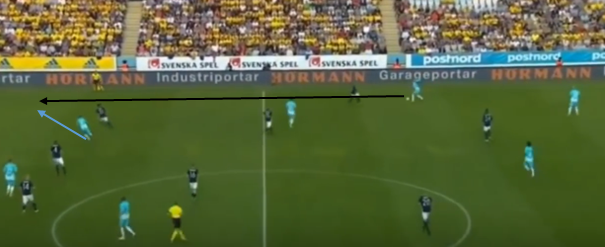
Another threat for the opposition defending in a flat 4-4-2 is quick switching play. Playing narrow will open up spaces on the opposite side of the pitch what then can be exploited by a direct pass. Leaving both wide midfielder and full back on the opposite side to the ball can be especially dangerous.
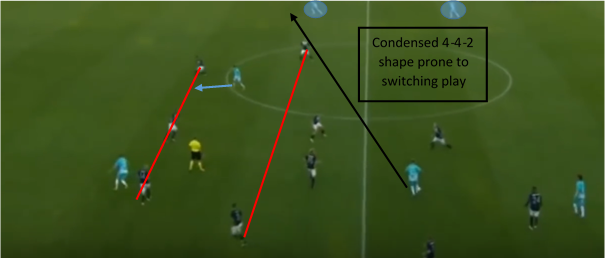
This is because a 2v2 situation or even an overload may arise as the opposition does not have enough players to provide spare man to support the pressurising player. Therefore, wide midfielder will cover the full back and full back will cover wide midfielder. The opposition centre backs will occupy strikers (making it difficult to offer support), while central midfielders will mark central midfielders (potentially 2v3 if playing with i.e. 4-3-3).
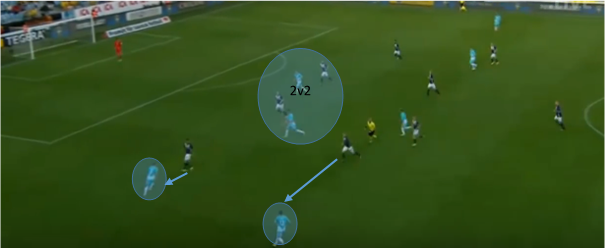
A response to these attacking strategies was a rise in 4-4-2 variations such as playing with a midfield diamond or central striker dropping back in 4-4-1-1. It can also be the case of specific players having individual roles to cover certain zones or players. These minor changes ensure cover of spaces between the lines and help in offering better defensive pressure and support what makes it increasingly difficult to play through.
By Alex Trukan, Development Coach, Nottingham Forest
@AlexTrukan


